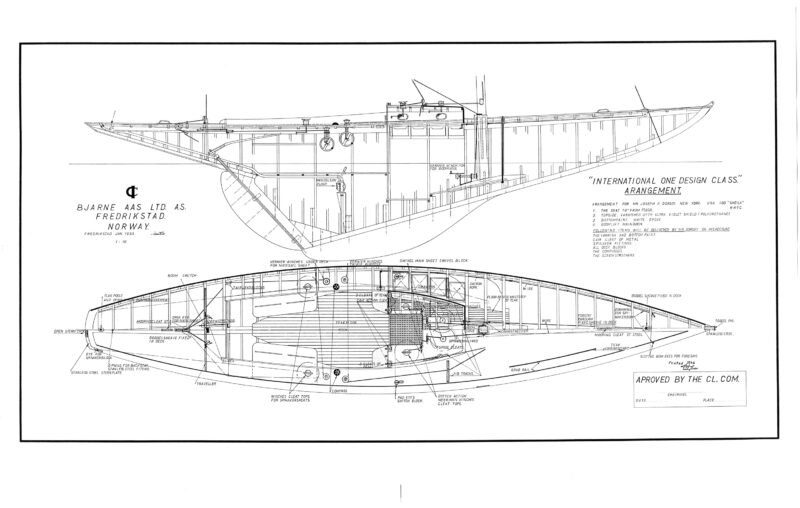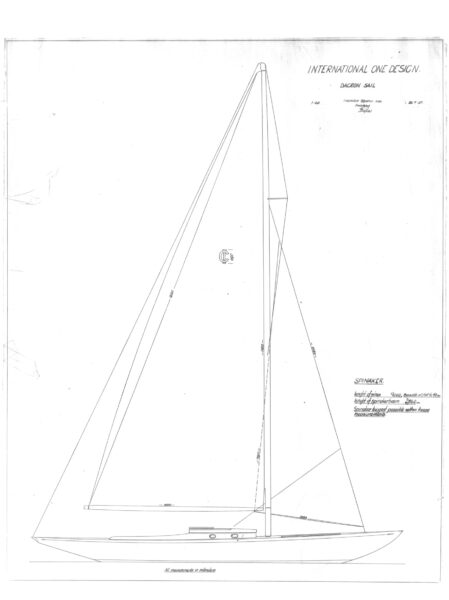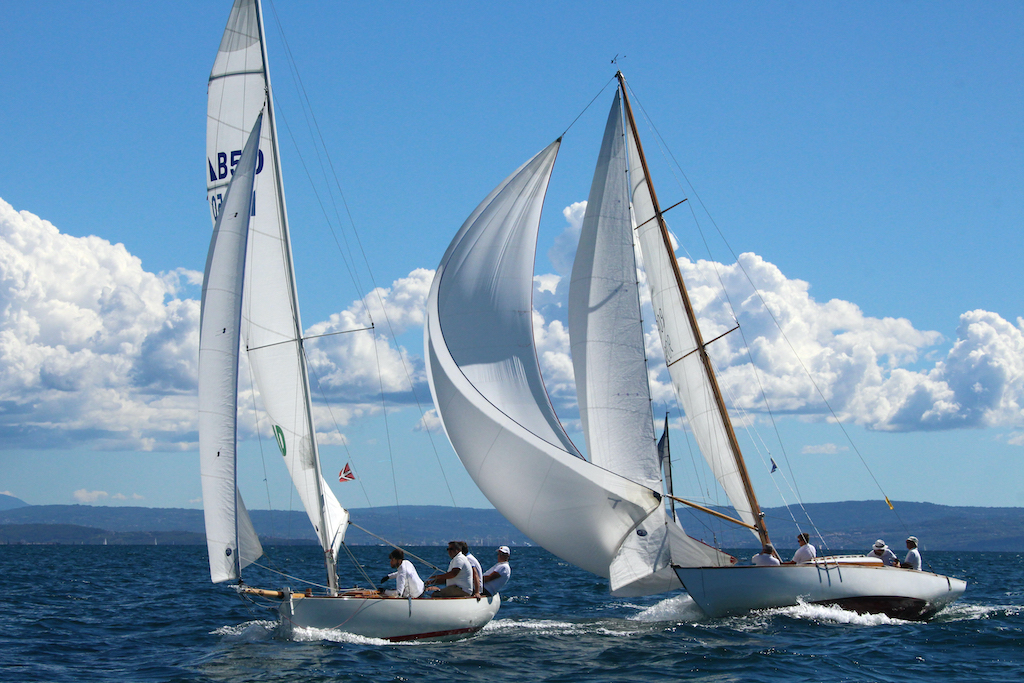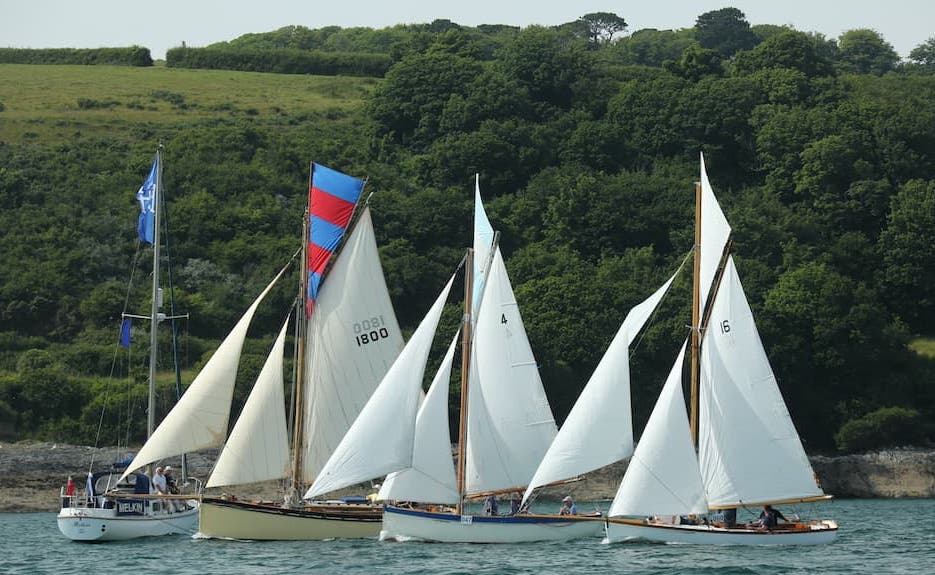

IOD History from Wikipedia
The International One Design (IOD, International) is a class of sail boat developed in 1936 for yacht racing. It is a 33-foot open-cockpit day sailer used for day racing, rather than for overnight or ocean races. Popularised prior to the Second World War, the International One Design class is considered a classic one today.
Origin
The International class sloop was created by American yachtsman, Cornelius Shields, as he sought to create a new one design yacht for the Amorita Cup series of team races between Bermuda and Long Island Sound. While in Bermuda one spring, he looked at a Bermudian Six Metre, the Saga, owned by Kenneth and Eldon Trimingham, and knew instantly that he had seen the prototype of a racing class boat.
Inspired by the beauty of the Six Metre yacht and its performance, Shields envisioned using it as the basis of a one design racing class that would have the advantages of both limiting the upwardly-spiraling costs of yacht racing and putting competing crews on an equal footing as far as equipment was concerned.
Shields commissioned Saga’s designer-builder, Bjarne Aas of Fredrikstad, Norway, to develop plans for a one-design version of Saga. He negotiated with Aas to reduce the size of the Saga’s design to produce a 33-foot (10 m) racer. The resulting design was smaller than the Saga, with less displacement, but greater beam of 6 ft 9 in (2.06 m). It measured 21 ft 5 in (6.53 m) in at the waterline, had a draft of 5 ft 4 in (1.63 m), and displaced 7,120 lb (3,230 kg). The mast was 45 ft (13.72 m), carrying 426 square feet (40 m2) of sail. The design of the boat is what is known as a Bermuda sloop, or a Marconi sloop, being single-masted and Bermuda rigged. The result may be considered a reminder of yachting’s “Golden age” with the traditional metre-boat’s long overhangs, graceful sheer, deep, narrow hull, and lofty rig.
The cost of an IOD in 1936 was $2,670. Sails, spars, running rigging, cradle, insurance, and shipping charges from Norway were included in the price. With the backing of the enthusiastic Shields, the boat was quickly adopted by the top racers on Long Island Sound. The first of the initial order of 25 yachts was delivered at City Island, New York in December 1936. “I finally arranged to sail her the week after Christmas…the first time anyone had sailed an International,” recalled Shields, many years later. “I don’t think I’ve ever had a more joyous day on the water. The wind was from the northeast, light in the morning and then stronger at mid-day, so we had a chance to try her out under a variety of conditions. The boat was a delight to handle, and balanced perfectly. I felt great satisfaction at this — the planning and hope and care hadn’t been in vain.”
The Internationals quickly spread. Bermuda took delivery of seven in January 1937. The next year’s fleets were established in Marblehead, Massachusetts and Northeast Harbor, Maine, followed by fleets in Norway and Cowes. During the war, legend says that Aas buried the construction jigs to protect them during the Nazi occupation. After the liberation of Norway, construction resumed at Fredrikstad with boats going to San Francisco, Sweden, France, Oyster Bay, and Cowes. Fiberglass construction was introduced in the 1960s with great care taken by the class to ensure that the wood and glass yachts could race on an equal basis. Today, there are twelve fleets racing around the world— Bermuda, Norway (two fleets – (Fredrikstad and Tønsberg), the United Kingdom (St. Mawes, Falmouth), Sweden (Stenungsund), Canada (Chester, Nova Scotia), New York (three fleets — Larchmont, Manhattan, and Fishers Island), Maine (Northeast Harbor), Massachusetts (two fleets — Marblehead and Nantucket), and California (San Francisco Bay).
Most recently, IODs were the first class awarded International Classic Yacht status by the International Sailing Federation (ISAF).








